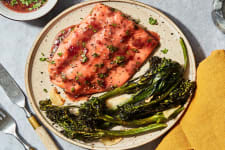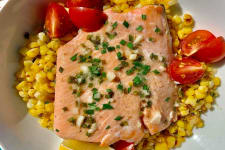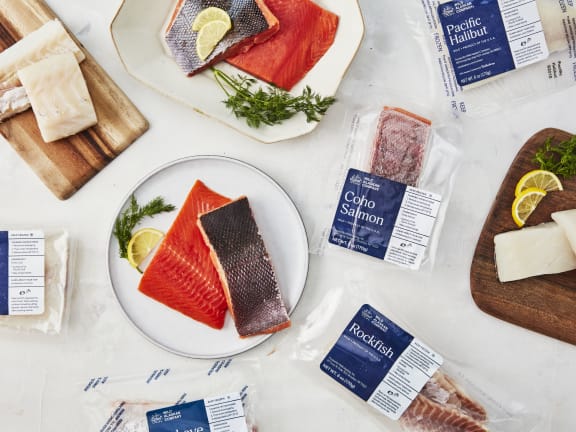
The Sea-Food Pyramid: An Overview of Nutritional Benefits of Wild-Caught Fish
August 22nd, 2022How a Diverse Diet of Seafood Supports Well-Rounded Nutrition
About Brooke Scheller, DCN, CNS:
Dr. Brooke Scheller is a Doctor of Clinical Nutrition and Board Certified Nutrition Specialist. She specializes in functional nutrition to support gut health, mood and mental health, and alcohol use. Dr. Brooke has over 12 years of training and experience in nutrition and functional medicine and has worked with both individuals and large organizations building nutrition programs to scale. She is also the founder of Condition Nutrition, a nutrition consultancy working with start up organizations in personalized nutrition, supplements, and health-tech.
When it comes to fish, you may be asking yourself, which fish is best for me? What is the healthiest fish to eat? How can I choose a fish if I have specific health goals or certain nutritional needs?
Instead of thinking about a single fish to incorporate in your diet, consider how a variety of fish can support overall health. Wild-caught fish from Alaska can be an excellent source of nutrients and a key part of a healthy diet, with each species offering a different nutritional profile. Eating a steady variety of the healthiest fish species ensures that we’re getting well-rounded nutrition from a diverse diet.
Comparison of Health Benefits of Wild-Caught Seafood
We typically think of adding in more omega-3 fatty acids into our diets when we are considering the best fish to eat, but there are other nutritional benefits that come from wild-caught seafood’s vitamin D, antioxidant, and lean protein content.
Each species of fish from Wild Alaskan Company has a different nutritional profile. Here is a brief overview of nutritional benefits, per 6 oz. serving:
-
Sablefish contains the highest level of omega-3 fatty acids, with about 3000mg of DHA+EPA.
-
Sockeye salmon is an excellent source of vitamin D, containing over 100 percent of the average person’s daily needs.
-
Coho salmon is the best source of vitamin B12, and is also the richest fish in protein of species offered by Wild Alaskan Company, containing nearly 40g of it.
-
Both Pacific halibut and Pacific rockfish contain over 100 percent of the average person’s daily selenium needs, an antioxidant found in limited amounts in other food sources.
-
Pacific Cod and wild Alaska pollock are the leanest offerings from Wild Alaskan Company, both containing just 1 gram of fat.
Sources: Alaska Seafood Marketing Institute and USDA National Nutrient Database for Standard Reference
Wild-Caught Salmon

Wild-caught salmon can support a healthy immune system, with nutrients that can help reduce inflammation, and may promote heart health and brain function. Salmon — specifically wild-caught species — can be one of the healthiest foods to incorporate in your diet.
-
Coho and sockeye salmon are generally similar, both containing high amounts of protein and lower fat content compared to farmed salmon.
-
Coho salmon is slightly higher in omega-3 fats than sockeye, but all species of wild salmon contain omega-3s.
-
Sockeye salmon is the best source of vitamin D across all fish offered by Wild Alaskan Company, a key nutrient often lacking in the diet today.
Jump to our blog to read more about the differences between sockeye vs. coho salmon.
Pacific Halibut
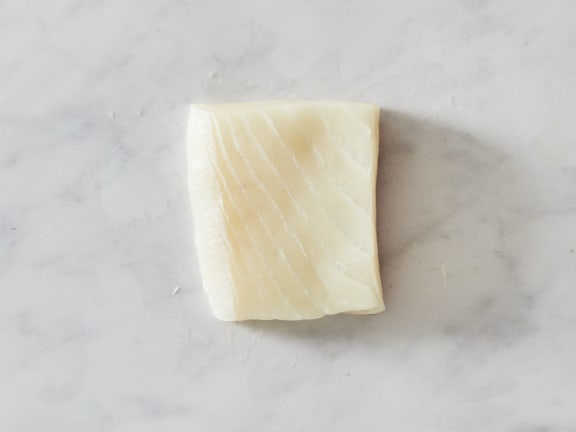
Pacific halibut is a very high-protein, low-fat fish relative to other species in Alaska, which can be excellent to balance blood sugar and help keep you full for longer.
-
Move over bananas: Pacific halibut is a great source of potassium in the diet, which supports heart and muscle health.
-
A 6 oz. portion contains over 100% of your daily selenium needs, a key antioxidant to protect your immune system and support thyroid health.
Pacific Cod
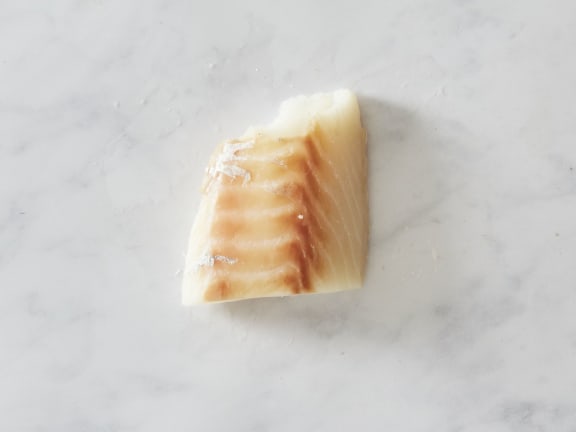
Cod is also another low fat fish from Alaska that can be part of a high protein and even low carb diet.
-
Pacific cod contains virtually no fat at all, making it an excellent source of lean protein that can be paired up with other healthy fats in recipes.
-
Pacific cod is a great source of vitamin B12, similar to the other fish, which helps with energy production and brain health.
Sablefish

This buttery soft fish gets its delicious flavor from its content of omega-3 fatty acids.
-
Sablefish presents an overall higher fat content among Wild Alaskan Company’s offerings. Consider pairing it with other lower fat foods or minimizing the amount of oil and fats used in the cooking process.
-
Sablefish has the highest iron and calcium content of Wild Alaskan Company's fish offerings.
Pacific Rockfish
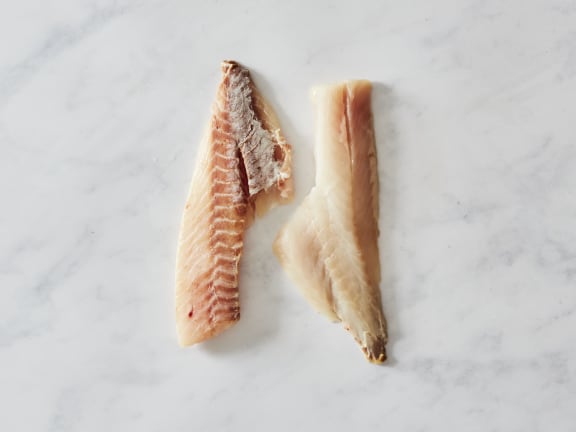
Pacific rockfish makes a beautiful, resilient fish that is firmer than other species of white fish and fulfills all of your daily needs of selenium.
-
While rockfish has a modest level of omega-3s, its benefits come from its higher amounts of protein, potassium, and vitamin D.
-
Rockfish is an excellent source of selenium, with over 100% of your daily needs. Selenium is a mineral found in many fish that help promote immune health, thyroid health, the brain, and heart health. Aside from seafood, selenium is found in limited amounts in other foods, like brazil nuts and oysters.
The Health Profile of Wild vs. Farmed Fish
Whether fish is wild or farmed can also influence its nutritional profile, so it’s important to consider where your fish was sourced. In general, wild-caught fish tends to be higher in certain nutrients and have a more desirable fatty acid profile over farmed fish. This is due to the natural diet of wild-caught fish, which is balanced in omega-3 fat content and other essential nutrients.
One example of how a fish’s diet directly affects its quality is the bright red color of wild-caught salmon. This color is a result of a diet heavy in krill, rich in a red-pigmented antioxidant called astaxanthin.
Farmed salmon typically are a pale pink color because they can’t eat krill in confinement. Instead, they are fed corn- or soy-based pellets that contain some pigment — because without this pigment, farmed salmon fillets would end up beige or gray in color. These pellets also decrease the benefit of the healthy omega-3 fats that fish are known for and increase the level of omega-6 fats, which are overabundant in the average person’s diet and in excess can lead to inflammatory health issues.
Jump to our blog to read more about the differences between wild vs. farmed salmon.
Benefits of Omega-3 Fatty Acids in Seafood
One of the most impactful nutrient benefits of consuming fish is the presence of omega-3 fatty acids — specifically, DHA and EPA, which are found in abundance in certain varieties of seafood and are essential to overall health. Since coldwater species of fish tend to be fattier than fish from freshwater ecosystems, wild-caught seafood from Alaska includes several species of fish rich in omega-3s.
The National Institutes of Health suggest that omega-3s are important for cardiovascular health, cognitive function, brain health, promotion of healthy mood, prevention of cancer, and supportive of infant and childhood development.
Be sure to stock your kitchen with sustainably-caught fish and shellfish by sourcing your seafood online from Wild Alaskan Company. You’ll get high-quality, wild-caught seafood delivered straight to your doorstep. Choose your fish subscription box today.


